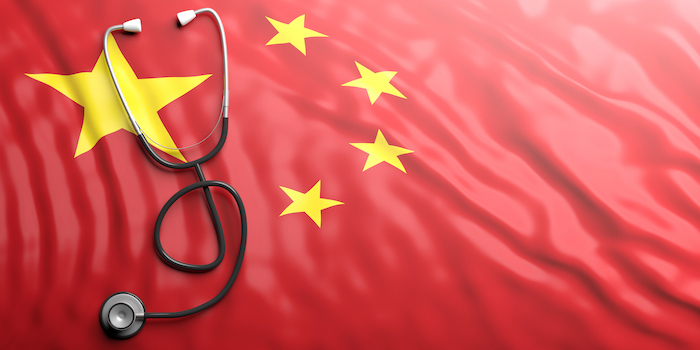Navigating China’s Heath Care Transformations

China has successfully transitioned from its ancient healthcare roots, characterized by a rigid and traditional system, to a contemporary global healthcare model, marked by innovation, advancement, and accessibility, thereby achieving universal health coverage. Based on universal health coverage (UHC), the basic principle of China’s health reforms is to free everyone. As the government accelerates cutting-edge planning under the Healthy China 2030 initiative, free health services are expanding to a vast population. The installation of the UEBMI (Urban Employee Basic Medical Insurance) and the New Rural Cooperative Medical Scheme (NRCMS), which would cover at least 95 percent of citizens, not only helped the Chinese government achieve its goal of improving health care but also introduced effective medicines. China has implemented tasks of access between urban and rural areas and an ever-growing middle class to advance healthcare ecosystems through increased investment in health services, workforce training, and constructive policies that ensure equal access to quality care for all citizens.
Reforms in China’s healthcare system
China’s healthcare system reform began in 1985, when a report by the former Ministry of Health of China on several healthcare reform policies proposed the principle of “relaxation of politics, streamlining of administration, and delegation.” Powers raising funds from various sources expand the horizons of health enterprise development and good work, which represents the official beginning of the reform of China’s medical system. Health funds are covered by the government and companies. The Chinese government launched a social security pilot programme combining social security with personal payment in Zhenjiang, Jiangsu Province, and Jiangxi Province. In 1998, the reform of health insurance for urban workers was launched, marking the beginning of China’s social security system to adapt to the socialist market economy. In October 2002, the “Decision of the Central Committee and State Council of KRK on Further Strengthening of Rural Health Work” clearly stated that a new rural cooperative medicine system should be gradually introduced, which focuses on planning the total cost of serious diseases. The government became aware of the importance of a health system for social and economic development and thus accelerated the reform of China’s health system. In 2005, a model for separation of management and hospital operation was presented mainly by representatives of Shanghai Shenkang Hospital Development Center and Jiangsu Wuxi Hospital Management Center.
According to the Development Research Center of the State Council of China, between 2006 and 2008, the Chinese government mobilised various forces to study the reform of the medical and healthcare systems and solicit public opinion. In 2009, China began a new reform of the medical and health care systems aimed at making medical care affordable and accessible, as well as ensuring access to and financial security of health care. In 2010, China designated 16 pilot cities and established 37 provincial-level pilot regions to implement the pilot reform of public hospitals. The Chinese government proposed that by the year 2011, the primary health care security system would cover all urban and rural residents, initially establish a national system of essential medicine, refine the community-level treatment system, and guarantee equal basic public health services would be introduced, and public hospitals would be reformed on an experimental basis. The Zero-margin drug sales were fully implemented in state community-level hospitals and health facilities, and a national drug supply system was initially established. In 2012, a comprehensive reform of provincial-level public hospitals was launched, a key link in providing accessible and affordable medical care in rural areas and will be fully implemented in 2015.
China integrated urban health insurance in 2016 for the unemployed and rural cooperatives for a unified health insurance system and existing cities and rural areas in non working life. In 2017 the reform pilot for the city’s public hospitals was fully implemented, and drug distribution were banned effectively controlling the excessive growth of medical costs in public hospitals. China’s drug security enterprises have entered the development phase with a more standardized comprehensive reform of public hospitals, canceled drug markets, official drug purchases, DRGS, and other new policies. The stable public health system, treatment system, medical security system, general medical security system, scientific management and operation system of medical and health institutions has been formed a comprehensive model of the medical system, and ensured that everyone has access to basic services.
In the context of the new treatment and health system reform, Sanming, a city in Fujian province, is one of the first pilots for progressive diagnosis and Treatment and Medical Consortium Building, advanced health insurance payment reform by forming a tight medical association as a carrier, and conducted important research for the key work pilot plan for stepwise diagnosis and treatment expansion system. Thus, a model of system reforms called the Sanming model was presented as the core of deepening medical reform because it succeeded in solving inefficiency and waste in public hospitals. The success of Sanming’s health reform is inseparable from government support, but it also provides lessons for other institutions of study. Sanming’s experience was even praised by President Jinping Xi at an important meeting of the Central Steering Group for Deepening Comprehensive Reform in 2017 which called for its practices to be promoted nationwide. The National Health Commission issued a notice summarizing the experience of step-by-step diagnosis and treatment and the construction of a medical consortium in Sanming City.
In 2020, advancing the medical reform experience of Fujian Province and Sanming City is part of the core tasks of deepening the reform of the medical and health system since 2012 in the Announcement issued annually by the General Office of the State Council. In 2021 and 2022, “Further Advancing Sanming City’s Medical Reform Experience” has been regarded as one of the four main tasks of the announcement for two consecutive years. Specifying the general requirements, main tasks, and work organization, the notification prepares a road map for further reforms, promotes the transition from treatment centered to public health centered, and accelerates the common reformation of public health services, Health Insurance and the production cycle of medicines.
Over the past decade, China’s health system reform has made great steps as China has made significant progress in increasing health equity and strengthening financial protection, especially for poor people. Many actions are ongoing to combat noncommunicable diseases, improve delivery efficiency control health care costs and make more efforts to reduce the inequitable distribution of health care resources to meet the increased demand for quality and paid services audience improvement. As China is committed to achieving universal health and building a healthy China by 2030, the country must continue the process and take the necessary political measures to make it work.
China’s Commitment to Universal Health Coverage
China’s desire to achieve UHC (Universal Health Coverage) through its initiatives of the Healthy China 2030 project which aims to emphasizes prevention over treatment, with a particular emphasis on preventing diseases such diabetes, cancer, and cardiovascular disease. China has placed more of an emphasis on early screening and diagnosis in addition to prevention. Pre-screening and patient education programs can provide patients the information they need to take preventative action, assisting in the diagnosis of conditions that place a heavy strain on the healthcare system and possibly increasing the chance that patients will have improved health outcomes. With the help of UEBMI (Urban Employee Basic Medical Insurance) and the New Rural Cooperative Medical Scheme (NRCMS), which aims to serve across the country, the government is improving access to health services throughout China. From UHC, where the proportion of people with health insurance is quite large and the number of insured persons has also increased. Today more than 95% of China’s population is covered by health insurance, and due to dynamic changes compared to previous years, coverage has increased significantly. The rate of growth has been most dramatic in areas that previously made health care difficult to access, despite large investments in the system’s preventive functions. The fact that rural residents are availing the many excellent health services of the city – NRCMS designed specifically for its residents, undoubtedly benefits them greatly.
Urban Employee Basic Health Insurance, NRCMS (UEBMI) and social insurance health insurance for rural nursing (NRCMS) aims to address the specificities of urban health care and the later to positively influence the health of the rural population. Key measures have greatly increased health insurance coverage and improved health indicators mean that a large number of Chinese have experienced health-related financial problems.
The quarterly reporting system, which works particularly well because it allows frequent tracking of expenses, is a key element of a successful program. With today’s urban workers, it is possible to get highly educated and educated health insurance with low deductibles that even low socio-economic status workers can benefit from. So that is evidence that undoubtedly shows its impact on the health and well-being of workers in the city, as well as on the productivity and stability of the surrounding residential areas.
Services coded or defined in the UEBMI are hospital visits, stays or operations, prescriptions, and preventive care. Full coverage is only a temporary relief to the pain because they still face financial difficulties to meet the immediate treatment costs. This factor will greatly improve the health status of the population because they will be sent to the right hospitals in time and therefore there are conscious diabetes prevention strategies to curb it, which have reduced morbidity and improved general health. People can act better on health conditions that are detected very early, and create a culture of preventive treatment and similar measures, and this could be done accordingly through medicine, strengthening the health of the whole society. These two plans are the two main sectors of China’s Universal Health Insurance (UHC) strategy, are tailored to urban healthcare needs and the other focuses on the special health care needs of farmers. Indeed, these unprecedented efforts have significantly helped accelerate overall growth in health insurance coverage, improve health outcomes, and remove financial barriers to better health.
Conclusion
The Chinese government aims to promote its social and economic development of the nation, as a global economic and political force. The country is determined to improve overall health coverage, and they see China’s research based pharmaceutical industry as critical to their goals, as it contributes to both health and wealth. There is certainly reason to believe that these motives are the driving force behind a President Xi Jinping has placed health policy and recognized its ability to influence both social and economic development. Healthy China 2030 demonstrates China’s long term approach to healthcare and demonstrates China’s commitment to contributing to global healthcare.


